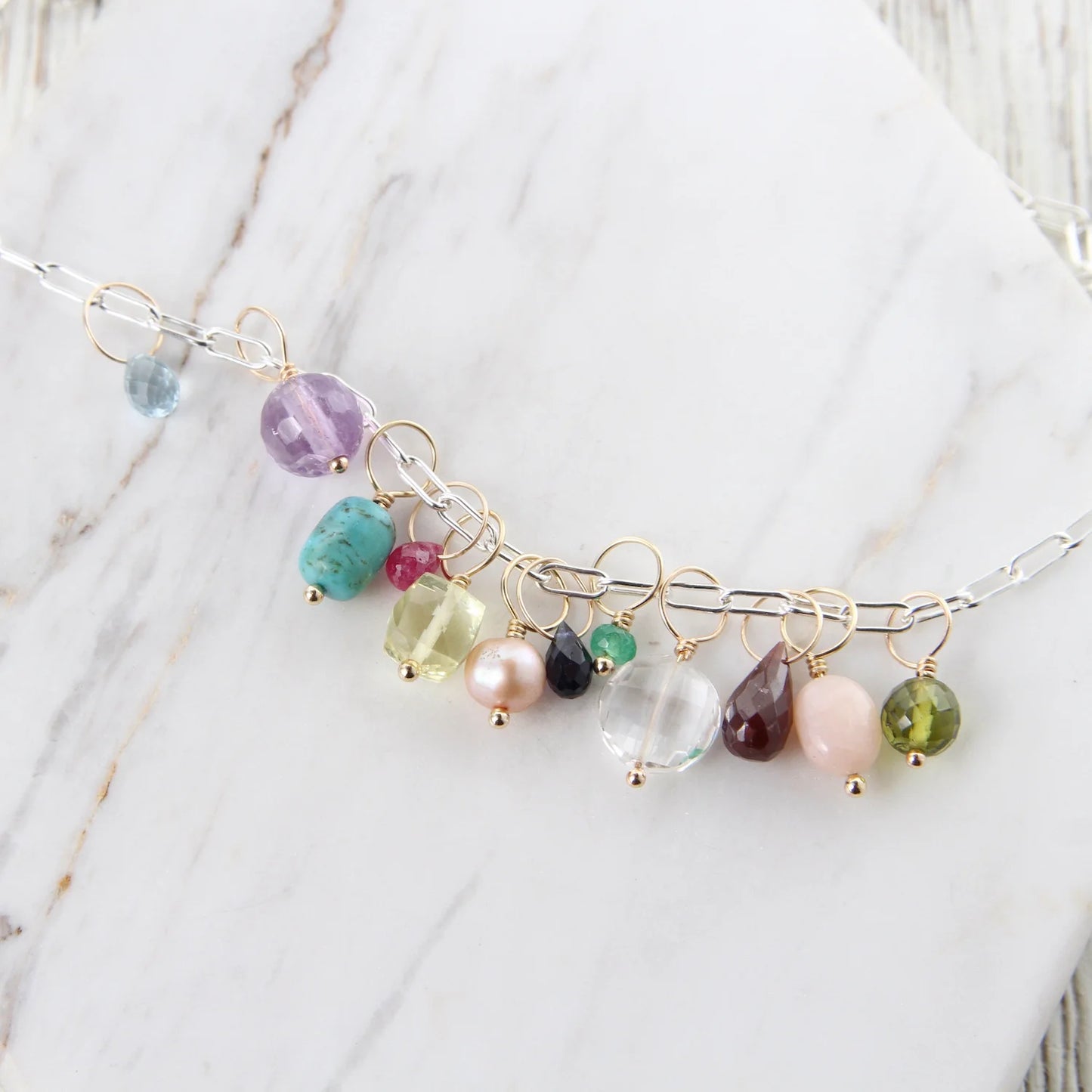Enjoy quick, complimentary ground shipping on orders $100 and up.
Valid for standard ground shipping in the USA excluding AK & HI.
Enjoy quick, complimentary ground shipping on orders $100 and up.
Valid for standard ground shipping in the USA excluding AK & HI.

HISTORY
The history of birthstones dates back thousands of years, originating in Biblical times, as described in the Book of Exodus. This ancient tradition began with the twelve jewels on the breastplate of Aaron. Each month is associated with a primary gemstone and often an alternate birthstone. The alternate stone is usually more affordable while maintaining a similar color to the primary gemstone.
NOT SURE WHICH GEMSTONE IS YOUR BIRTHSTONE? CHECK OUT OUR LIST
|
BIRTHDAY MONTH |
PRIMARY BIRTHSTONE |
ALTERNATE BIRTHSTONE |
|
Garnet |
Pink Quartz |
|
|
Amethyst |
No Alternate |
|
|
Aquamarine |
Bloodstone |
|
|
Diamond |
White Topaz |
|
|
Emerald |
Chrysoprase |
|
|
Pearl |
Moonstone |
|
|
Ruby |
Carnelian |
|
|
Peridot |
No Alternate |
|
|
Sapphire |
Lapis |
|
|
Opal |
Tourmaline |
|
|
Topaz |
Citrine |
|
|
Turquoise |
Blue Topaz |
VARIANCE
Lists of birthstones can vary, with some including alexandrite for June and blue zircon for December. We've opted to exclude these from our birthstone collection, as our jewelry designers focus on other gemstones for their handcrafted jewelry pieces. Explore our unique designs featuring popular birthstones for each month.
THREE BASIC CATEGORIES
Birthstones are typically divided into three main categories. Ornamental stones are colorful and attractive but not considered true "gemstones," such as malachite or hematite. Semi-precious gemstones, like amethyst and turquoise, hold moderate value. Precious gemstones, including rubies and emeralds, are the most valuable and sought after. Explore our jewelry collection featuring these stunning birthstones.
DURABILITY
Birthstones are measured by the Mohs scale of hardness, which indicates a stone's durability and scratch resistance. A wide range of numbers may be given for one stone due to different varieties within the same gemstone family. For example, almandine garnet and grossular garnet have different hardness levels due to their distinct chemical compositions. The Mohs scale runs from 1 to 10. Use these base reference points to understand your gemstone's durability. Explore our collection to find jewelry that suits your lifestyle and preferences.